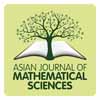Evaluation of the Weather-Influenza Pattern with a Regression Model Approximation to Causality
Main Article Content
Abstract
Once upon a time, this author starts research in the relations between Australia’s number of cases in influenza and weather. The outcome has been hypothesized with a structural equation model. In this article, the author tries to evaluate the model. It is true that one can apply the evaluation to both of the formative measurement model and structural model through certain suitable procedures. At the same time, this author approximates the model by the linear regression method. The result is one can apply the regression to the Hayes’ Process model and find out the wanted model with mediation and moderation effects. In addition, one can also use the Granger Causality Test to examine all of the hypothesized causal relationships between those independent variables such as temperature, wettest_1, the concentration of carbon dioxide, strongest wind, and coolest and the number case of influenza infected. The final outcome is that Hayes’ model 91 is the best mediated one with carbon dioxide as the moderated factor. This author will also explain in details why we have the above prescribed Hayes’ model 91 as the proposed regression model approximation to causality from the SPSS data analysis.
Article Details
This is an Open Access article distributed under the terms of the Attribution-Noncommercial 4.0 International License [CC BY-NC 4.0], which requires that reusers give credit to the creator. It allows reusers to distribute, remix, adapt, and build upon the material in any medium or format, for noncommercial purposes only.
